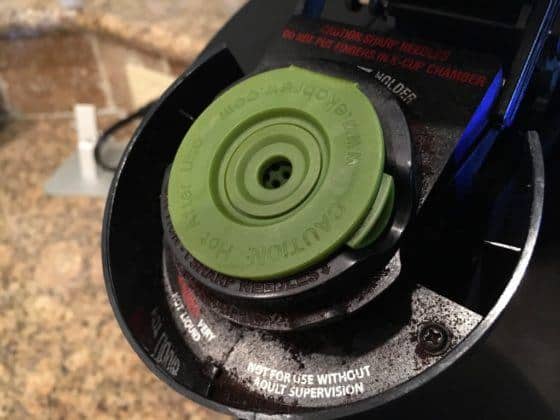 When I was on vacation, my wife and I rented an apartment in Beaune, France instead of getting a hotel room. At left is a picture from the center of town.
When I was on vacation, my wife and I rented an apartment in Beaune, France instead of getting a hotel room. At left is a picture from the center of town.
It was nice to be able to wash clothes part way through the 12-day trip. That allowed for a smaller batch suitcase, which allowed us to carry on our bags. We've learned the hard way that checked bags can get lost on an international connection, especially when you are switching between “partner airlines.” These are partners that blame each other when something goes wrong, I also learned. We had bags go missing for four days once. So, we've eliminated that risk by vowing to never check a bag unless we're on the way home.
The apartment listing said there was a washing machine. We knew it would be a small, European size, but we could make it work. I asked the owner of the apartment if they also had a dryer. She said yes. I should have asked a more specific question, such as, “Do you have an electric, heated dryer?” Their definition of a dryer was a drying rack. Oops. But, we made it work.
The apartment's kitchen had a Philips Senseo single cup coffee maker. Small batch!
I had never used one of these in all of my travels. I own a Keurig and have used those and various other in-room hotel coffee makers (it's caffeine and not much else in terms of value).
When I made the first cup, it made a surprisingly good cup of coffee. Better than the instant coffee that you often find in European hotels (venturing out for espresso or an Americano is a better choice).
I made a cup the second day and it was TERRIBLE. The coffee was really weak.
I thought I had followed the same process.
But, I soon realized my mistake.
In the hotel room single-cup coffee makers I have used before, the pods or packets are always symmetrical. It doesn't matter which side is up.
With Senseo, it does matter.
This is the correct way… there's a subtle set of “Senseo” logos printed on the pod. That has to face up, apparently.

The second day, I had those logos facing down. The bottom material is different from the top. It's not just a matter of the printing. They feel different. And this matters for the functionality and quality.

One thing I like about the Keurig coffee makers (and they have their faults, including their bad environmental impact) is that the whole process is pretty error proofed. You can't insert the K-Cup the wrong way.
You can't insert it upside down (it won't fit) and it doesn't matter if it's rotated to a certain orientation.

There is a marking on the machine that says “Align Holder.” I believe that only applies to the reusable K-Cups that you can buy and use.
There are green semicircular pieces on the side that have to line up in the proper orientation to the left and the right so that they fit into the notches in the machine.

It *is* possible to insert the reusable K-Cup in two different ways so that the pieces fit into the notches. I honestly don't know if the flat part has to be at the top or bottom (I always put it at the top).

I could run an experiment to find out, but nah.
So, I think the Keurig machine is more error proofed than the Senseo.
Here are some other posts I've written in the past about coffee and mistake proofing:
Do you see examples of error proofing in coffee making? Or opportunities where it's needed?
What do you think? Please scroll down (or click) to post a comment. Or please share the post with your thoughts on LinkedIn – and follow me or connect with me there.
Did you like this post? Make sure you don't miss a post or podcast — Subscribe to get notified about posts via email daily or weekly.
Check out my latest book, The Mistakes That Make Us: Cultivating a Culture of Learning and Innovation:










A true comment, though I have to say that it never came to my mind to insert the pad upside down.
I had another problem, definitely my fault and I’m not sure if a coffee maker can detect it. Here something to laugh: I used the same pad for another cup of coffee. This was not a very tasty cup of coffee as you can imagine.